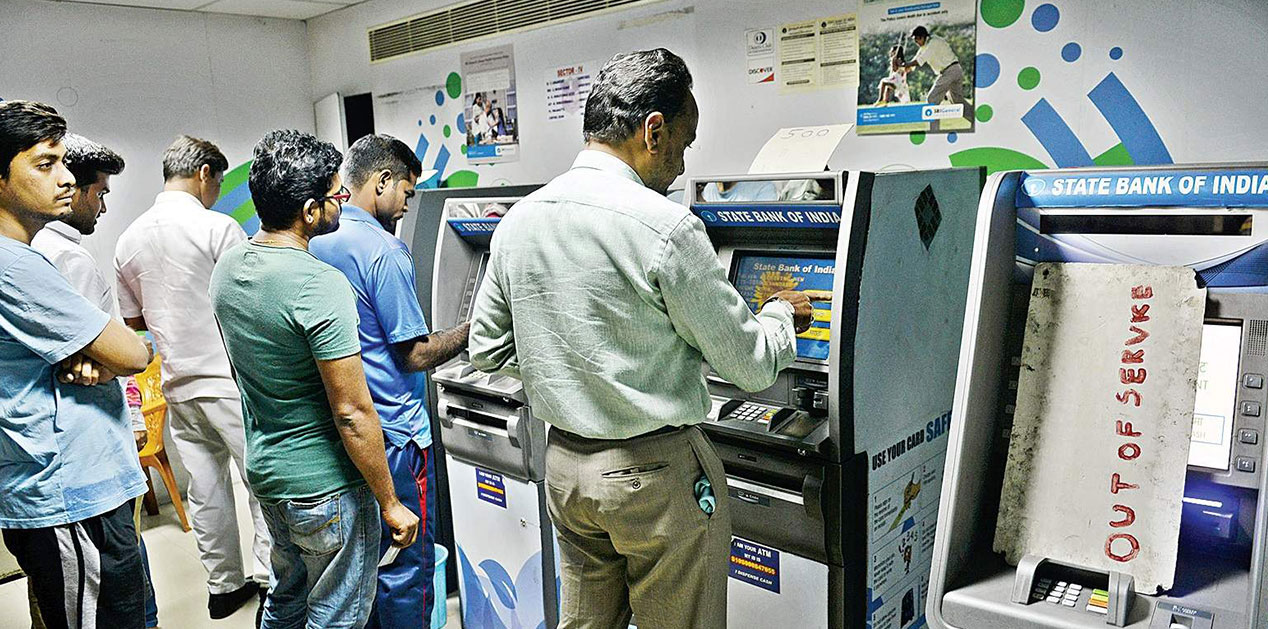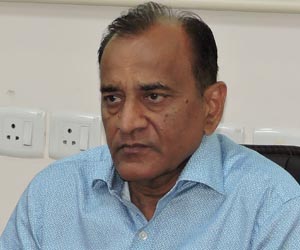On November 8, 2016, Prime Minister Narendra Modi shook the economy by the scruff of its neck with his decision to demonetise more than 85 per cent of the Indian currency (by value) then in circulation. The announcement, televised live to the nation, came into effect barely four hours after it was made, thus leaving very little time for anybody — bankers, industry, black money hoarders, and the political system — to take protective measures of different kinds. The audacity of scale and determination was such that few were able to immediately gauge its impact. The result was a gaggle of voices, mostly premised on speculation that quickly took positions either in favour or against the decision. As the crisis hit the roof in the days to follow and the magnitude of inconvenience to the people became more and the more evident, the Prime Minister stepped in again and sought 50 days’ time to restore normalcy. He was buoyed by the enormous support he had received from the public which, despite facing serious hardships, backed the drive against the black market economy.
The 50-day period ended on December 30, 2016. A day later, on December 31, 2016, Prime Minister Modi was on television again, thanking the people for their unstinted support. His remarks dripped with understanding: He said he realised that the people had to stand in long queues to access their own money; that they had to face hardships. But he was also quick to remind them that this pain was nothing when compared to the trauma the nation would have continued to suffer if the black money hoarders and the corrupt had continued their free run. He structured the demonetisation narrative as a battle between the good and the evil. He assured that normal days were just round the corner.
By then, of course, queues at banks had largely disappeared and ATMs, although still short of cash, were not as dry as they were in the immediate aftermath of November 8. Withdrawal limits for customers were still in place, though somewhat relaxed. Re-monetisation had begun with the currency printing presses working round the clock to fill in the gap created by the sudden invalidation of the old Rs 500 and Rs 1,000 notes. The Government believes that it has tided over the most critical period and, if it can, in collaboration with the Reserve Bank of India (RBI), manage the re-monetisation process effectively, the worst will soon be forgotten. But for that to happen, the Government will also have to demonstrate evidence that the demonetisation decision has met its primary aim of striking at the domestic black economy. As many experts as the common people, who backed the Prime Minister’s move, have remarked, the government machinery now has to ensure that the measures succeed and the disruption caused by thedemonetization, are acceptedas essential, inescapable and for a good cause.
Meanwhile, those who callously berate the Government’s supposed failure to tackle the decision’s fallout — if not criticise the merits of the decision itself — need to understand the massive overhauling that the money market has gone through. According to estimates in the public domain, a whopping 17.17 billion number of Rs. 500 denomination notes were in circulation as on November 8; the Rs. 1,000 notes were at a no less impressive 6.86 billion. All of these were, in a matter of four hours,to be sucked out of the system, except for a small portion allowed to be spent on essentials, till December 15, 2016-a decision reflecting a humane approach. People were warned to turn over such denomination notes to the banks by the end of December 2016 and, after that, to the nearest RBI branch with valid justification. While the RBI, within a few days from November 8, started issuing new Rs 500 notes and replaced the Rs 1,000 denomination with Rs 2,000, the cash crunch that resulted, caused understandable inconveniences to the people who were thus far totally dependent on cash transactions. It wasn’t easy to quickly repair the breach. Between November 10 and December 19, the number of new Rs 500 and Rs 2,000 notes issued were 2.2 billion in number — a drop in the ocean when compared to the amount earlier in circulation. The total number of new currency notes as a percentage of the notes withdrawn stood at 38.4 per cent, further underscoring the crisis.
More sets of figures will point to the enormity of the challenge the Government has faced. While the value of new currency notes issued between November 10 and December 19 stood at Rs 5.93 trillion, the total value of the denominated currency as on November 8 was more than Rs 15 trillion. Finally, the notes banned on November 8 comprised close to 25 per cent of the total currency circulation by volume (by value, as stated earlier, it was over 85 per cent).
These are mind-boggling figures that give an idea of the monumental nature of the task that the government has undertaken. It’s has huge political and economic risk implications and the final outcome will mark a new era in reshaping the Indian economy, indeed the way Indians will use their money in the future. The question being asked is whether there could have been an easier way out? Noted economists supporting the move have been quick to point out that the malaise was so deeply ingrained into the system that any amount of superficially tinkering with the issue, would have been ineffective if not counter-productive, sending a mistaken impression that the Government was making an effort, but far from enough to cause any real impact. The Prime Minister was obviously aware that he would be making too many enemies in one go, not the least among the political class. After all, the political system has for decades had a stake in maintaining the flourishing black money market, most especially in contesting elections. This largely explains why the political class had been hesitant all these years to the take the bull by the horns. This also largely explains the all-round condemnation of the initiative from the political class, including those which have been championing as anti-corruption platform.
Since the jury is still out on the November 8 hammer-blow, there remains enough space for the critics and the defenders of demonetisation to remain at each other’s throats for a while more. But this is an opera that is going to play out longer than one would expect an ‘economic' decision to, because of the far-reaching implications. There is, of course the economic implications; but there is also the political implication. Besides, the side-shows of demonetisation have been no less interesting — whether in the area of digital payments or an expected clampdown on benami transactions or the announcement by the Government of sops for the weaker sections of society as an emollient to the demonetisation bruise.
Politically speaking, demonetisation will be a persuasive factor in the coming Assembly elections to the five States of Uttar Pradesh, Punjab, Uttarakhand, Manipur and Goa. All parties have decided to exploit the issue in a bid to garner voter support. While the ruling party’s rivals have branded the decision as a cruel joke on the common people of the country and an attempt to please a handful of the very rich and powerful, the Prime Minister and his team have cast the matter as a decisive blow to the corrupt and the black money hoarders, and to restore the pride of the honest citizen. The Bharatiya Janata Party draws justifiable comfort from its performance in a clutch of local body elections in the post-demonetisation period, but the real test will be the coming State polls. It is banking on the positivity that has been generated among the ordinary citizens, while the opposition parties are hoping to encash on the frustration among these very people over difficulties that demonetisation has brought on them. Of course, demonetisation will not be the sole determinant; local issues and caste equations will continue to matter. In Uttar Pradesh, the crisis within the ruling Samajwadi Party, which has escalated over the last week, is certain to impact the poll prospects of not just that party but also that of its opponents, the BJP and the Bahujan Samaj Party — though in different ways. Punjab has its own set of issues, with the drug factor and anti-incumbency sentiments being spun with vigour by rivals of the ruling Shiromani Akali Dal-BJP coalition regime. Similarly, Goa and Manipur have very specific local issues that will count in elections. But demonetisation will remain at the back of the voters’ mind when they walk to the polling booth.
The impact on the economy will take some time to tabulate. In the short term, experts have been giving out predictions of a slowdown in the GDP growth — from the projected 7.6 per cent to 7.1 per cent this fiscal. If this were to indeed happen, it is argued, the impact would be only short lived and get absorbed, sooner than expected. While it true that many sectors have seen a dip in their business because of the currency crunch and the uncertainties ahead, yet the flip side is that this so-called economic contraction has not impacted revenue collection. Union Minister for Finance Arun Jaitley recently quoted figures to establish that thing weren’t bad. He said that between April 1 and December 19, the direct tax collection went up by over 14 per cent (to nearly Rs. 6.6 lakh crore); the indirect tax collection as on November 30 showed a rise of more than 32 per cent; excise duties collection had risen by over 43 per cent; and the service tax netted was up by close to 26 per cent.
Besides these collections, the banks have had a windfall gain in terms of deposits of scrapped notes over the 50 days period, and this should help them lower their interest rates and pass on the benefits to consumers of their various services. The Prime Minister in his December 31, 2016, address, nudged the banks to be sensitive to the concerns of the common man in the given situation, and there are reports that some banks have already taken the first steps in that direction. Of course, not all the deposits that have come in to the system, are ‘clean’ in nature. According to Income Tax Department statistics, nearly four lakh crore rupees of deposits made since November 8 are suspect and being investigated. If the depositors fails to convince the tax authorities about the source of income, then they will pay and the Government’s collection kitty will only swell. At last count, the tax authorities had issued as many as 5,000 notices and conducted over 1,000 surveys post-demonetisation — collecting close to Rs 4,200 crore as undisclosed income.
According to reports in the media, deposits in Jan Dhan accounts across the country doubled in 45 days since demonetisation, touching a rocking Rs 87,000 crore. The Income Tax Department is looking carefully at these accounts, because it’s reasonably suspected that a bulk of money deposited into these might belong to parties that are not the actual account holders. The accounts were used as a parking slot by black money hoarders and the corrupt. There are similar such anomalies in the regular accounts too; the case of a Gujarat-based businessman under the taxman’s scrutiny, is one such example. There is no doubt that a lot of muck is going to be unearthed. This, coupled with the Prime Minister’s stated determination to crack down on benami transactions, could well break the back of the black money economy in the country. But we have to wait and see what comes out of the investigations and what actions the Government takes in implementing and strengthening the benami business laws. Of course, these are only the tips of the iceberg and the final figures will have its own story to tell.
While demonetisation took off as a tool to tackle black money and corruption, it has had other consequences too. The cash has crunch forced lakhs of Indians to adopt the digital payment mode. Government statistics have it that the volume of transactions through the mobile wallet went up by nearly four times in the month after November 8 — to 63 lakh per day from 17 lakh per day; the value of transactions increased to more than Rs 190 crore from Rs 52 crore. The number of transactions through the RuPay card too rose four times to touch 16 lakh per day. Mobile wallet companies across the countries and off-line payment platforms have never had it so good. United Payment Interface (UPI) transactions, which were just 3,721 per day before demonetisation, shot up to 48,000 per day in the post-demonetisation month. All of these, according to Minister for Information Technology Ravi Shankar Prasad, represented a massive jump of 100 per cent to 400 per cent in digital payment transactions. There cannot be any doubt that the digital payments system is good for the economy as the money is accounted for and can be traced back easily, unlike cash transactions. The Prime Minister recently unveiled BHIM (Bharat Interface for Money), an Aadhaar-based mobile wallet system by which people can make payments directly from their bank accounts without the need for an Internet and with the help of a thumb impression.
The important message coming out of the above is that people, including the common man are willing to adopt new ways of transition from the cash to less-cash economy by placing trust in the private entities. Firms like PayTm’s traffic increased by a whopping 435 per cent, apps download went up by 200 per cent, and overall transaction by volume and value grew by close to 250 per cent. Airtel’s mobile wallet, according to a senior company official, saw a jump of 435 per cent in its traffic and a 200 per cent increase in transaction value. Mobikwik recorded an overall transaction increase by 18-fold, and said that it had seen a 200 per cent increase in the ‘add cash’ option on its site. A recent study conducted by industry body, Assocham, said the transaction volume of mobile wallet payments was likely to see a massive compounded annual growth rate of over 90 per cent. The transaction value too is slated to rise to Rs 2,000 lakh crore by fiscal 2022, as compared to eight lakh crore rupees in fiscal 2016. According to some reports, Indians make about one trillion dollars payments annually, of which more than 90 per cent used to be in cash. This should be changing now in a big way, bringing in its wake a great deal of transparency and accountability in the way private businesses have been conducted so far.
Of course, the ride is not entirely smooth. Digital payments are still problematic in many parts of rural India, which are hard hit by the cash crunch. Lack of awareness and digital connectivity have been major impediments. Aware of the problem, the Government has formed a task force to promote the practice in the hinterlands. Just 55,000 merchants in rural India have begun to accept cashless payments while 2.5 million rural households have been enrolled in digital transactions. The National Payment Corporation of India has been asked to simplify the formats of Net-based as well as the UPI modes of payment. Besides, there are other issues. For instance, BHIM can take off enormously if rural Indians have Aadhaar-liked bank accounts. But, out of the over one million active workers under the Mahatma Gandhi National Rural Employment Guarantee Scheme (MGNREGS), only 34 per cent have Aadhaar-linked bank accounts. The Ministry of Rural Development has now a target to have 35 million job accounts linked to Aadhaar. The other problem with cashless transactions has to do with the inadequate number of biometric machines at Government ration shops to identify MGNREGA workers. Only 35 per cent of the 1, 60,000 ration shops across the country had installed such machines.
These are the challenges, but in the challenge lies a huge opportunity of the type never witnessed before. The Government machinery and the private sector will have to make systemic changes in the country’s payment regime following demonetisation, less-cash if not cashless, must eventually become the order of the day so that even after the cash crunch eases, and itshould not lapse into business as usual with people returning to cash as their preferred mode of transaction. The opportunity to revamp the system in the long-term should not be allowed to be lost.
(The writer is Opinion Editor of The Pioneer, senior political commentator and public affairs analyst. Economic and financial figures cited in this paper are drawn from government statements and the print media.)
Published Date: 3rd January 2017, Image Source: https://encrypted-tbn2.gstatic.com











Post new comment